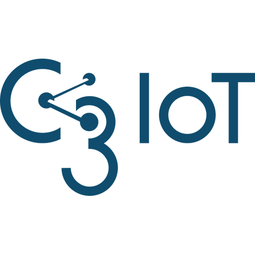Download PDF
Execute Energy and Sustainability Management Solutions: A Fortune 100 Technology Company Case Study

Technology Category
- Sensors - Environmental Sensors
Applicable Industries
- Buildings
- Renewable Energy
Applicable Functions
- Facility Management
Use Cases
- Building Energy Management
- Energy Management System
Services
- System Integration
The Challenge
The Fortune 100 technology company faced a significant challenge in managing its diverse portfolio of over 500 facilities worldwide, which ranged from standard office buildings to energy-intensive labs and data centers. The company required a software solution that could effectively manage energy and greenhouse gas (GHG) emissions, integrate and analyze sustainability and energy metrics, and report results from energy and emissions mitigation projects for its annual sustainability report and the Carbon Disclosure Project. The company also needed to perform detailed interval analysis on thousands of opaque energy-consuming racks of equipment, identify and analyze energy efficiency opportunities, and manage a global portfolio of low-cost, capital-intensive energy efficiency and emissions mitigation projects.
The Customer
Not disclosed
About The Customer
The Fortune 100 technology company is a global enterprise with a presence in over 165 countries. It has an extensive network of 70,000 channel partners and employs 70,000 people. The company generates annual revenues of $50 billion and has a customer satisfaction score of 4.47 on a 1-5 scale. The company has a diverse portfolio of more than 500 facilities worldwide, including office buildings, labs, and data centers. The company is committed to energy efficiency and sustainability, as evidenced by its implementation of the C3 AI Energy Management application.
The Solution
The company partnered with C3 AI in 2012 and implemented the C3 AI Energy Management application on Amazon Web Services. This application allowed the company to manage the full life cycle of energy and environmental sustainable management – from data integration to analysis and opportunity identification, through mitigation project execution, and, finally, to reporting and continuous improvement. The company used the data from the application to identify and analyze energy efficiency opportunities and manage a global portfolio of low-cost, capital-intensive energy efficiency and emissions mitigation projects. The company’s Global Energy and Sustainability teams, property managers, and Financial, Planning, and Analysis (FP&A) executives used C3 AI Energy Management to manage the full life cycle of energy and environmental sustainable management.
Operational Impact
Quantitative Benefit
Related Case Studies.

Case Study
Remote Monitoring & Predictive Maintenance App for a Solar Energy System
The maintenance & tracking of various modules was an overhead for the customer due to the huge labor costs involved. Being an advanced solar solutions provider, they wanted to ensure early detection of issues and provide the best-in-class customer experience. Hence they wanted to automate the whole process.

Case Study
Vestas: Turning Climate into Capital with Big Data
Making wind a reliable source of energy depends greatly on the placement of the wind turbines used to produce electricity. Turbulence is a significant factor as it strains turbine components, making them more likely to fail. Vestas wanted to pinpoint the optimal location for wind turbines to maximize power generation and reduce energy costs.

Case Study
Siemens Wind Power
Wind provides clean, renewable energy. The core concept is simple: wind turbines spin blades to generate power. However, today's systems are anything but simple. Modern wind turbines have blades that sweep a 120 meter circle, cost more than 1 million dollars and generate multiple megawatts of power. Each turbine may include up to 1,000 sensors and actuators – integrating strain gages, bearing monitors and power conditioning technology. The turbine can control blade speed and power generation by altering the blade pitch and power extraction. Controlling the turbine is a sophisticated job requiring many cooperating processors closing high-speed loops and implementing intelligent monitoring and optimization algorithms. But the real challenge is integrating these turbines so that they work together. A wind farm may include hundreds of turbines. They are often installed in difficult-to-access locations at sea. The farm must implement a fundamentally and truly distributed control system. Like all power systems, the goal of the farm is to match generation to load. A farm with hundreds of turbines must optimize that load by balancing the loading and generation across a wide geography. Wind, of course, is dynamic. Almost every picture of a wind farm shows a calm sea and a setting sun. But things get challenging when a storm goes through the wind farm. In a storm, the control system must decide how to take energy out of gusts to generate constant power. It must intelligently balance load across many turbines. And a critical consideration is the loading and potential damage to a half-billion-dollar installed asset. This is no environment for a slow or undependable control system. Reliability and performance are crucial.

Case Study
Energy Saving & Power Monitoring System
Recently a university in Taiwan was experiencing dramatic power usage increases due to its growing number of campus buildings and students. Aiming to analyze their power consumption and increase their power efficiency across 52 buildings, the university wanted to build a power management system utilizing web-based hardware and software. With these goals in mind, they contacted Advantech to help them develop their system and provide them with the means to save energy in the years to come.

Case Study
Remote Monitoring and Control for a Windmill Generator
As concerns over global warming continue to grow, green technologies are becoming increasingly popular. Wind turbine companies provide an excellent alternative to burning fossil fuels by harnessing kinetic energy from the wind and converting it into electricity. A typical wind farm may include over 80 wind turbines so efficient and reliable networks to manage and control these installations are imperative. Each wind turbine includes a generator and a variety of serial components such as a water cooler, high voltage transformer, ultrasonic wind sensors, yaw gear, blade bearing, pitch cylinder, and hub controller. All of these components are controlled by a PLC and communicate with the ground host. Due to the total integration of these devices into an Ethernet network, one of our customers in the wind turbine industry needed a serial-to-Ethernet solution that can operate reliably for years without interruption.

Case Study
Temperature monitoring for vaccine fridges
Dulas wanted a way to improve the reliability of the cold chain, facilitating maintenance and ensuring fewer vaccines are spoiled. Dulas wanted an M2M solution which would enable them to record and report the temperature inside vaccine refrigerators.





